Kozhikode Zamorin Sri Manavedan Raja created a new dance form Krishnanattam in the 17th century on the basis of Jayadev’s Ashtapati, Krishna’s story. Its fame spread across Kerala, and Kottakara Thampuran (Veera Kerala Varma), a patron of arts came to know about it. He desired to see the art form during a celebration event and so sent a request to Kozhikode Zamorin to send his troupe to his palace. But due to political rivalry Zamorin insulted and humiliated Raja stating that Kottakara Thampuran is not enough intelligent and artistic to understand and enjoy this great art form. Deeply humiliated Raja started a new art form giving importance to Sree Rama’s story and named it Ramanattam. It took elements from Krishnanattom too. It’s well acknowledged that Kathakali – Kerala’s most popular dance form, an integral part of Kerala culture is derived from Ramanattam.
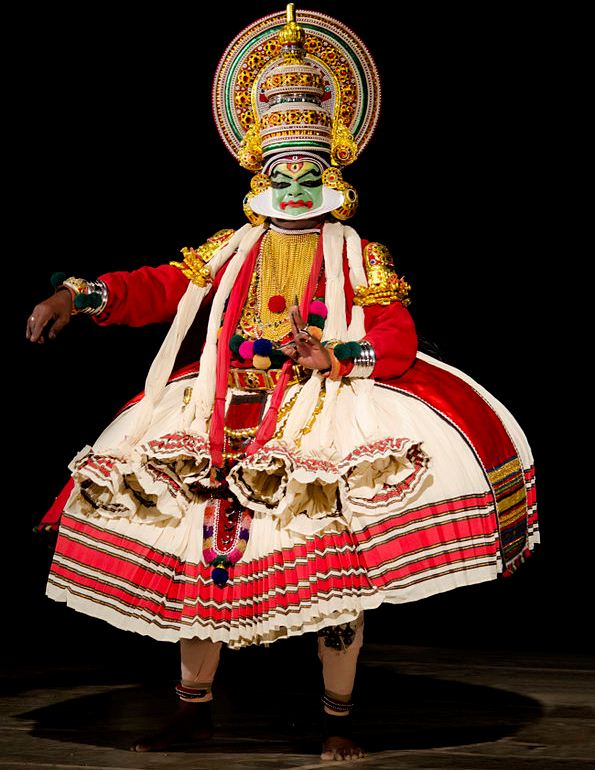 |
| A Kathakali performer in full costumes |
Great artists who gave new faces to this art form
Kaplingadu Namboodiri, Vettath Rajavu and Kottayathu Thampuran are the major patrons who renovated and introduced new things to this art form. Kaplingadu Namboodiri modified crown, costumes and mudras of Kathakali. He also directed Kathakali’s Thodayam, Purappadu and Melapadam. Ramanattam performers had conversations earlier. It was completely abolished by Vettath Raja.
Costumes and artists of Kathakali
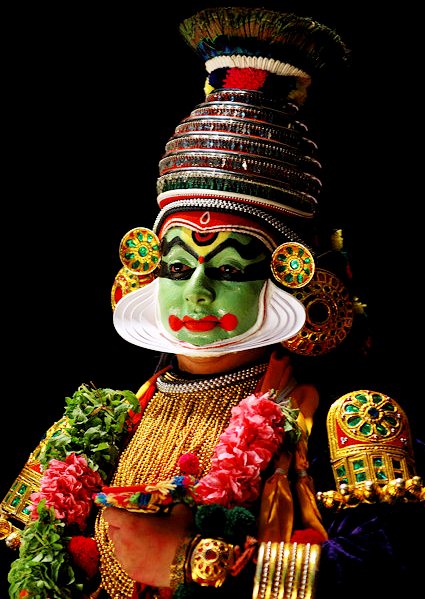 |
| Colourful Costume of Pacha Character of Kathakali |
Kathakali artists express themselves through gestures and eye movements. Whole story (Attakatha) is recited by background artists. Main singer is called Ponnani and the singer who assists and repeats him is named as Shingidi. Kathakali performer performs in front of a big traditional Kerala Lamp in accordance to the recitals by the vocalists. Musicians are seated on the right side of the stage and singers in the front side.
Pacha, Kathi, Thaadi, Kari and Minukk are the different categories of costumes associated with Kathakali. Pacha(Green) indicates Sathvik, Kathi – Rajo Gunam and Thaadi – Thamo Gunam. The characters – Yudhishtira, Bhima, Nalan and Indran are given Pacha (good characters or protagonists). Duryodhana and Raavan are given Kathi(red) costume indicating that they are antagonists.
Thaadi has three variants – Chuvapp (Red), Vella (White) and Karupp (Black). Dussasana and Baka are given red; Hanuman and Nandikesan are white thaadi characters and Kali character of famous Nalacharitham Aattakatha is black.
Kari indicates forest dwellers, hunters etc and characters – Soorpanakha and Nakratundi belong to this group. Minukk represents female characters, saints, messengers etc.
Certain sequences & rules strictly followed during Kathakali performances
Functions start with Kelikottu which is done during dusk. It’s a procedure to inform everyone that Kathakali performance is to conduct at night. Kathakali performances are done at night only and a single Attakatha may take four or more days to complete. So the whole Athakatha will be split into modules to perform for each day.
The traditional lamp known as Kalivilakku in Kathakali will be lighted at the centre of the stage around 8 pm. It’s followed by Arangukeli using the instruments – Maddalam, Chengila and Ilathaalam. Thodayam is a special pooja (rangapooja) conducted after Arangukeli to conduct the performance without any disruption. Vandana Slokam in praise of Vishnu, Siva and Ganesha, followed by Purappaad and Melappadam (also known as Manjuthara) before the play starts. Last sequence is Dhanashi – to end the performance.
Mudras associated with Kathakali
Kathakali emphasizes on gestures and eye movements, and whole story and events are told through movement of hands and eyes. For Mudrabhinaya, Kathakali artists adopt the work – Hastalakshana Deepika’.
24 basic mudras are associated with Kathakali – Asamyukta Mudras using one hand, Samyukta Mudras using both hands. Misra Mudras form one among the basic mudras where each hand are used together to express some gestures, and both hands perform differently. When an artist performs mudras it should be well coordinated with body language, eyes and mind.
Musical instruments used for Kathakali
Chenda, Shudda Maddalam, Chengila and Ilathalam are the four musical instruments used for Kathakali. Ponnani uses Chengala and his Shingidi uses Ilathalam while singing.
Apart from Ramanattam and Krishnanattom, Kathakali takes many inspirations from several traditional art forms of Kerala such as Koodiyattom, Mudiyettu, Teyyam and Padayani, and also Kalari Payattu – Kerala’s trademark martial art form.
Unnayivaryar and his Nalacharitham Aattakatha which lifted Kathakali to a new level
Unnayivaryar who lived in the 18thcentury was a contemporary of Kunchan Nambiar and Ramapurath Varyar. Though clear evidences of Unniyivaryar’s life history are not available, it’s believed that he was born at Akathoott Variyath near Iranjalikkuda temple of Thrissur district.
Unnayivaryar was entirely different from Kathakali artists till then. He never imitated any, but many tried to follow him which was not at all easy. He was a great genius who created new set of rules for this performing art form. He contributed a single work to Kathakali – Nalacharitham Aattakatha. But this single work placed him at the top most position among the writers of Aattakatha. The work also helped Kathakali to gain worldwide audience and recognition.
Till Nalacharitham Aattakatha was authored, characters of Kathakali don’t have any individual personality. He recreated each character and assigned distinct personality to each one. Nalacharitham Aattakatha is also nicknamed as ‘Shakunthalam of Malayalam literature’. The play has been divided into four parts and needs 4 nights to complete. It tells the love story of Nalan and Damayanthi as told in Great Mahabharatha. This tale is widely accepted as the most romantic work of Kathakali.
Major similarities & differences of Kathakali, Ramanattam and Krishnanattam
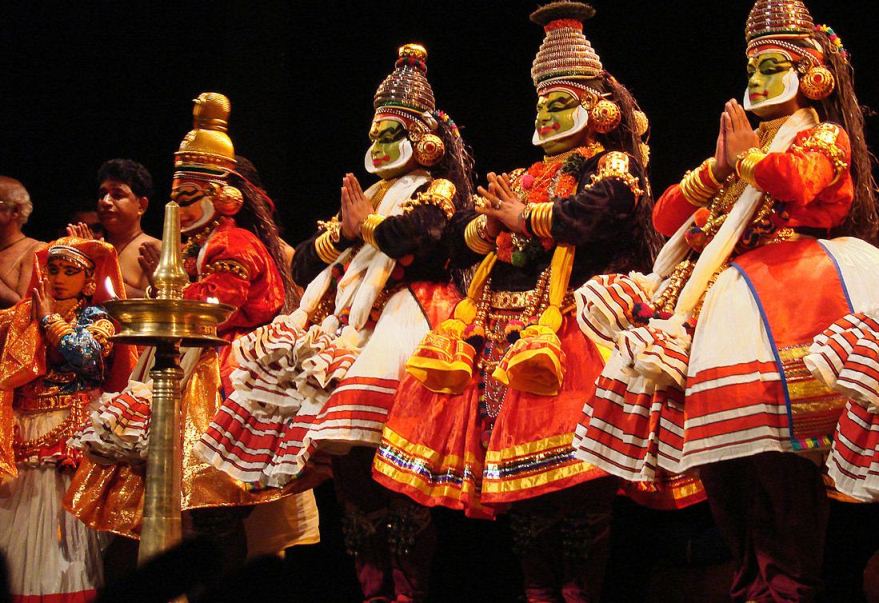 |
| Krishnanattam performance by a group of artists |
Though all these three art forms have costumes with striking resemblance, in detailed observation they vary in performance. Costume of Krishnanattam was adopted from Koodiyattam, oldest surviving traditional art form of Kerala. When Ramanattam was created by Kottakara Thampuran he got inspired from the costumes used by both these art forms.
Ramanattam is the tale of Lord Rama while Krishnanattam tells the story of Krishna. Later when Kathakali was born, it adopted several mythological stories associated with Hindu Purana in addition to Ramayana. That’s how Mahabharata, Nalacharitham etc became the popular stories adapted for Kathakali.
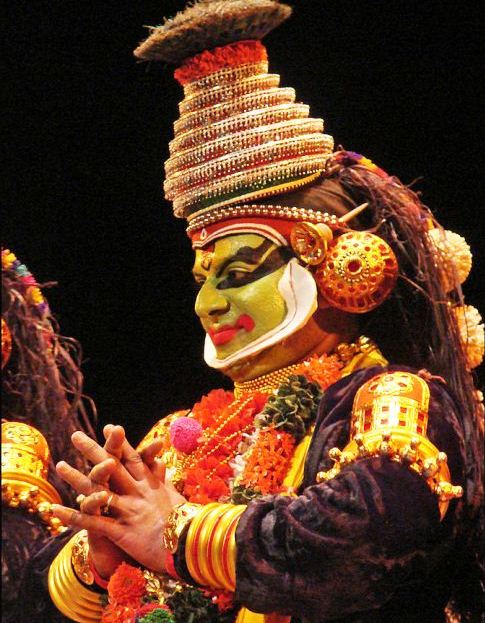 |
| Krishna Character of Krishnanattam Dance form |
The central character Krishna of Krishnanattam wears peacock features and it’s adopted in Kathakali too, where crowns of Rama and Krishna characters are decorated by peacock features similar to Krishnanattom. Sanskrit is adopted in Krishnanattam while Malayalam in Ramanattom (immediate predecessor of Kathakali) and Kathakali, which draws major difference between these two. In fact Attakatha in Malayalam made Kathakali popular among common man. Kathakali too inherits certain elements from Krishnanattom as per popular belief.
Krishnanattam is strictly restricted to the Guruvayur Temple and the temple still maintains the group since 1958 when Zamorin’s troupe came to Guruvayur. In fact Krishnanattom was first staged at Guruvayur temple in the 17th century when performance continued for 8 long days and choreography was done under the guidance of Sri Manavedan Raja. Zamorin of Kozhikode maintained it for many centuries till mid-1950s. It’s one of the oldest surviving art forms across the world and has 8 plays associated with it.
Krishnanattom is considered as an offering to deities, preferably Lord Krishna while Kathakali is a performing art form which has received wide recognition comparing Krishnanattom. Krishnanattom is widely conducted in Guruvayur temple.
Kerala Kalamandalam and Kathakali
Discussion of Kathakali is incomplete without taking great poet Vallathol Narayana Menon’s name – a patron of arts who renovated this art form and presented before art lovers across the world. He started Kerala Kalamandalam in Cheruthuruthi, Thrissur to promote and teach Kathakali. Now Kerala Kalamandalam is the biggest and most established dance and music school of Kerala which teaches different art forms of Kerala. Many great Kerala artists have studied and taught at Kerala Kalamandalam, and they add ‘Kalamandalam’ tag to their names which itself is a great honour to an artist.
Image source: Wikipedia
Read a few articles related to Kerala art, traditional music and dance forms followed since many decades and centuries. Here is the page link. Click on the images in the gallery to read






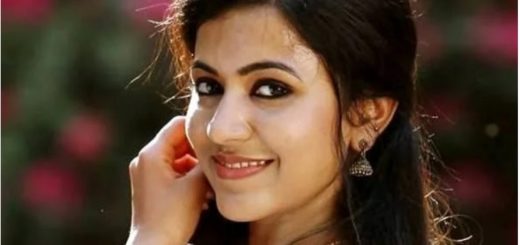
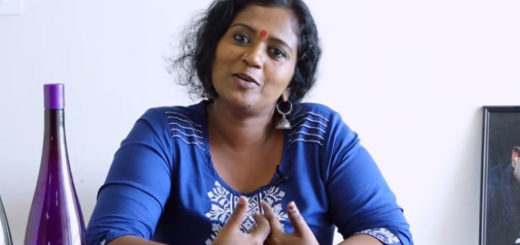









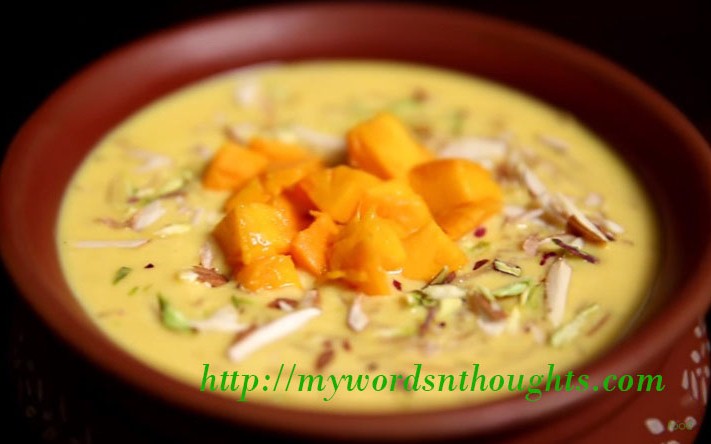
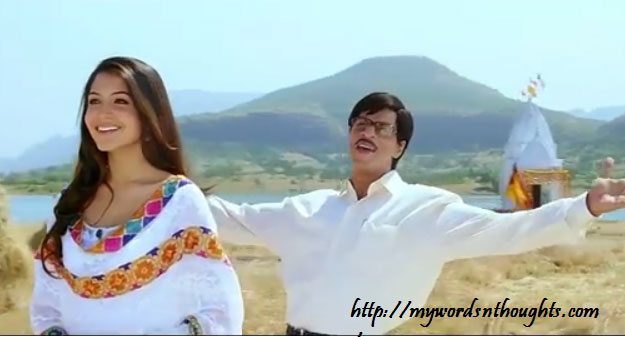
Recent Comments